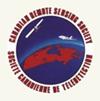Detection of Management Practices and Cropping Phases in Wild Lowbush Blueberry Fields Using Multispectral UAV Data
IF 2
4区 地球科学
Q3 REMOTE SENSING
引用次数: 3
Abstract
Abstract Normalized difference vegetation index (NDVI) and normalized difference red-edge index (NDRE) are vegetation indices commonly used in agriculture to provide information on crop’s growth and health. Here, we investigated the sensitivity of both indices to management practices in lowbush blueberry fields. Images of the experimental plots were collected with a multispectral camera installed on an unmanned aerial vehicle. Both NDVI and NDRE values were significantly higher in fertilized plots than in controls (0.88 ± 0.03 vs. 0.79 ± 0.03 for NDVI, and 0.37 ± 0.01 vs. 0.33 ± 0.01 for NDRE) due to fertilization effect on vegetative growth. The increase was higher under mineral than organic fertilization during the two first phases of the cropping system (by ∼0.3 and ∼0.2 for NDVI and NDRE, respectively). NDRE was not affected by thermal pruning and fungicide application but was negatively correlated with Septoria infection level. NDVI was more strongly correlated with stem length than NDRE, but unlike NDRE, NDVI was not impacted by the development of reproductive shoots during the harvest phases. Overall, the results indicate that although both index values are correlated, their sensitivity to changes in canopy characteristics differs depending on the cropping phase. Further research must be conducted to relate these indices to blueberry’s nutrient status.利用多光谱无人机数据检测野生低灌木蓝莓田的管理措施和种植阶段
归一化差异植被指数(NDVI)和归一化差异红边指数(NDRE)是农业中常用的植被指数,用于提供作物生长和健康信息。在这里,我们调查了这两个指标对低丛蓝莓田管理措施的敏感性。实验地块的图像由安装在无人机上的多光谱相机采集。施肥对营养生长的影响显著高于对照组(NDVI为0.88±0.03比0.79±0.03,NDRE为0.37±0.01比0.33±0.01)。在种植制度的前两个阶段,无机施肥比有机施肥增加更多(NDVI和NDRE分别增加0.3和0.2)。NDRE不受热修剪和杀菌剂施用的影响,但与Septoria感染水平呈负相关。NDVI与茎长的相关性强于NDRE,但与NDRE不同的是,NDVI不受采收期生殖芽发育的影响。总体而言,这两个指数虽然具有相关性,但它们对冠层特征变化的敏感性因种植期的不同而不同。要将这些指标与蓝莓的营养状况联系起来,必须进行进一步的研究。
本文章由计算机程序翻译,如有差异,请以英文原文为准。
求助全文
约1分钟内获得全文
求助全文
来源期刊

Canadian Journal of Remote Sensing
REMOTE SENSING-
自引率
3.80%
发文量
40
期刊介绍:
Canadian Journal of Remote Sensing / Journal canadien de télédétection is a publication of the Canadian Aeronautics and Space Institute (CASI) and the official journal of the Canadian Remote Sensing Society (CRSS-SCT).
Canadian Journal of Remote Sensing provides a forum for the publication of scientific research and review articles. The journal publishes topics including sensor and algorithm development, image processing techniques and advances focused on a wide range of remote sensing applications including, but not restricted to; forestry and agriculture, ecology, hydrology and water resources, oceans and ice, geology, urban, atmosphere, and environmental science. Articles can cover local to global scales and can be directly relevant to the Canadian, or equally important, the international community. The international editorial board provides expertise in a wide range of remote sensing theory and applications.
 求助内容:
求助内容: 应助结果提醒方式:
应助结果提醒方式:


